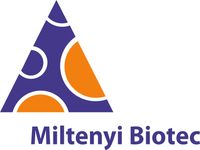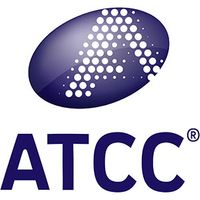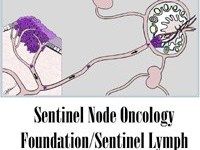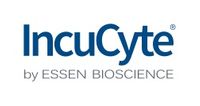Dr. David M. Albala graduated with a geology degree from Lafayette College in Easton, Pennsylvania. He completed his medical school training at Michigan State University and went on to complete his surgical residency at the Dartmouth-Hitchcock Medical Center. Following this, Dr ...
See moreProgram Committee Share
-
David Albala
-
Antonio Baines
Dr. Antonio T. Baines is an Associate Professor in the Department of Biology at North Carolina Central University (NCCU) and an adjunct professor in the Department of Pharmacology in the School of Medicine at the University of North Carolina (UNC) Chapel Hill. He earned a ...
See more -
Rajan Gupta
Dr. Rajan T. Gupta, MD, is an Assistant Professor of Radiology in the Division of Abdominal Imaging at Duke University Medical Center, as well as the Director of the Abdominal Imaging Fellowship Program and a Faculty physician in the Duke Cancer Institute. Since 2009, he has been ...
See more -
Keith Knutson
Keith L. Knutson, Ph.D., is a consultant in the Department of Immunology, Mayo Clinic in Florida, where he also serves as director of the Discovery and Translation Lab's Cancer Research Program. Dr. Knutson joined the staff of Mayo Clinic in 2005 and holds the academic rank of ...
See more -
Jonas Korlach
Jonas Korlach was appointed Chief Scientific Officer of Pacific Biosciences in July 2012. He was previously a Scientific Fellow, supporting commercial development of the PacBio RS II system and performing research aimed at developing new applications for SMRT technologies. He ...
See more -
Martin Latterich
The discovery of proteinaceous disease biomarkers and their clinical validation is critically important for the enablement of molecular diagnostics and ultimately, precision medicine. In spite of the importance of biomarkers, research done in the last two decades has yielded ...
See more -
Thomas Polascik
Thomas J. Polascik, M.D. is Professor in the Duke Cancer Institute, the Department of Surgery at the Duke University Medical Center, Durham, NC. Dr. Polascik trained at the Brady Urological Institute, the Johns Hopkins Hospital in Baltimore Maryland. After finishing his residency ...
See more -
Khyati Shah
Khyati Shah received her Ph.D. in Molecular Pharmacology from the University of the Pacific, Stockton, California. Her graduate research was completed in the lab of Jesika Faridi, Ph.D. Her work focused on the investigation of the mechanism of Akt induced tamoxifen resistance in ...
See more
Cancer Research & Oncology Week Virtual Event Series 2019

The 7th Annual Event in the Cancer Research & Oncology Week Virtual Event Series is now available On-Demand! This event focuses on advancements in prevention, diagnosis and treatment of different cancer types.
Cancer research has made major advancements in diagnosis, treatments, and the basic understanding of the disease itself. Each year we see progress in immunotherapy, treatments involving nanotechnology, advances in targeted and personalized therapeutics and drug development, and a decrease in mortality rates due to a strong focus on learning more about the origination of the disease.
The tracks for this year's event include:
- Tumor Drug Resistance and Tumor Evolution
- Radiation Resistance
- Novel Cancer Therapeutics and Cancer Prevention
- Health Disparities in Cancer
- Molecular Guidance Versus Standard of Care
The free online event brings together research professionals, scientists, and clinicians from around the world to learn and discuss recent advances in cancer research. As with all LabRoots event, the Cancer Research and Oncology Event encourages a worldwide collaboration and connections between colleagues and field experts.
Our virtual conference allows you to participate in a global setting with no travel or cost to you. The event will remain open 6 months from the date of the live event. The webinars will be available for unlimited on-demand viewing. This virtual conference also offers increased reach for the global cancer community with a high degree of interaction through live-streaming video and chat sessions.
Continuing Education
LabRoots is approved as a provider of continuing education programs in the clinical laboratory sciences by the ASCLS P.A.C.E. ® Program. By attending this event, you can earn 1 Continuing Education credit per presentation for a maximum of 32 credits.
Use #LRcancer to follow the conversation!
Agenda Share
-
OCT 10, 2019 1:30 PM PDT
Precision oncology: Biomarkers for treatment selection in metastatic castration resistant prostate cancer
Tian Zhang, MD, MHS
Assistant Professor of Medicine, Division of Medical Oncology, Department of Medicine, Duke Cancer InstituteBIOGRAPHY -
OCT 10, 2019 12:00 PM PDT
Tumor Mutation Burden: Challenges and opportunities of measuring and interpreting tumor mutational burden for patient care
Ravindra Kolhe, MD, PhD
-
OCT 10, 2019 10:30 AM PDT
Transcriptional Profiling of the Pediatric Tumor Microenvironment
Troy McEachron, PhD
Assistant Professor of Research, Translational Genomics, University of Southern California, Keck School of MedicineBIOGRAPHYSponsored By: NanoString Technologies -
OCT 10, 2019 9:00 AM PDT
Dynamic evolution of unstable genomes: insights from in vitro experiments and cancer genome analysis
Cheng-Zhong Zhang, PhD
Assistant Professor, Biomedical Informatics, Harvard Medical School , and Assistant Professor, Biostatistics & Computational Biology, Dana-Farber Cancer InstituteBIOGRAPHY -
-
OCT 10, 2019 7:30 AM PDT
Keynote Presentation: Cancer Prevention for the Practicing Oncologist - Recommendations for Cancer Patients and Their Families
Ernest Hawk, MD, MPH
Vice President & Division Head for Cancer Prevention & Population Sciences, University of Texas MD Anderson Cancer CenterBIOGRAPHY -
OCT 10, 2019 7:30 AM PDT
Keynote Presentation: Cancer Prevention for the Practicing Oncologist - Recommendations for Cancer Patients and Their Families
Jeffrey N Weitzel, MD
Director, Clinical Cancer Genetics, Professor, Director, Cancer Screening; Prevention City of HopeBIOGRAPHY -
OCT 09, 2019 1:30 PM PDT
Tumor processing for the isolation and visualization of Tumor Infiltrating Leukocytes
-
OCT 09, 2019 12:00 PM PDT
Next Steps in Personalized Medicine- Using Genomics and Imaging For Treatment Selection in Early Stage Prostate Cancer
-
OCT 09, 2019 12:00 PM PDT
What is New in Surgical Management of Invasive Bladder Cancer in 2020
Khurshid Guru, MD
Surgeon, Dept of Urology, Chair, Dept of Urology, Director, Applied Technology Laboratory for Advanced Surgery, Robert P. Huben Endowed Professor of Oncology, Roswell Park Cancer InstituteBIOGRAPHY -
OCT 09, 2019 10:30 AM PDT
A practical guide for multiplexed ion beam imaging to reveal tumor immunobiology
-
OCT 09, 2019 10:30 AM PDT
Newly Diagnosed Ovarian Cancer: Surgical Options
Mitchel S. Hoffman, MD
Full-time faculty member, Department of Gynecologic Oncology, Moffitt Cancer Center, and Professor, USF Morsani College of MedicineBIOGRAPHY -
OCT 09, 2019 9:00 AM PDT
Start at the End: A Strategy for Developing and Delivering Advanced Diagnostic Tests to improve Prostate Cancer Patient Outcomes
Stephen Pennington
-
OCT 09, 2019 7:30 AM PDT
Keynote Presentation: Pairing protein profiling with drug screens uncovers an effective therapy against high risk leukemia
Ernesto Diaz-Flores, PhD
Assistant Adjunct Professor in the Department of Pediatrics/Hematology at UCSFBIOGRAPHY -
OCT 09, 2019 6:00 AM PDT
Multilevel Interventions in Cancer Prevention and Control: A Community-Based Translational Research Framework to Address Prostate Cancer Disparities
Brian Rivers, PhD, MPH
Director of the Cancer Health Equity Institute Morehouse School of Medicine (MSM)BIOGRAPHY
- Novel Cancer Therapeutics and Cancer Prevention
-
OCT 09, 2019 6:00 AM PDT
Multilevel Interventions in Cancer Prevention and Control: A Community-Based Translational Research Framework to Address Prostate Cancer Disparities
Brian Rivers, PhD, MPH
Director of the Cancer Health Equity Institute Morehouse School of Medicine (MSM)BIOGRAPHY -
OCT 09, 2019 9:00 AM PDT
Start at the End: A Strategy for Developing and Delivering Advanced Diagnostic Tests to improve Prostate Cancer Patient Outcomes
Stephen Pennington
-
OCT 09, 2019 10:30 AM PDT
Newly Diagnosed Ovarian Cancer: Surgical Options
Mitchel S. Hoffman, MD
Full-time faculty member, Department of Gynecologic Oncology, Moffitt Cancer Center, and Professor, USF Morsani College of MedicineBIOGRAPHY -
OCT 09, 2019 12:00 PM PDT
What is New in Surgical Management of Invasive Bladder Cancer in 2020
Khurshid Guru, MD
Surgeon, Dept of Urology, Chair, Dept of Urology, Director, Applied Technology Laboratory for Advanced Surgery, Robert P. Huben Endowed Professor of Oncology, Roswell Park Cancer InstituteBIOGRAPHY -
OCT 10, 2019 7:30 AM PDT
Keynote Presentation: Cancer Prevention for the Practicing Oncologist - Recommendations for Cancer Patients and Their Families
Ernest Hawk, MD, MPH
Vice President & Division Head for Cancer Prevention & Population Sciences, University of Texas MD Anderson Cancer CenterBIOGRAPHY -
OCT 10, 2019 7:30 AM PDT
Keynote Presentation: Cancer Prevention for the Practicing Oncologist - Recommendations for Cancer Patients and Their Families
Jeffrey N Weitzel, MD
Director, Clinical Cancer Genetics, Professor, Director, Cancer Screening; Prevention City of HopeBIOGRAPHY -
- Tumor Drug Resistance and Tumor Evolution
-
OCT 09, 2019 7:30 AM PDT
Keynote Presentation: Pairing protein profiling with drug screens uncovers an effective therapy against high risk leukemia
Ernesto Diaz-Flores, PhD
Assistant Adjunct Professor in the Department of Pediatrics/Hematology at UCSFBIOGRAPHY -
OCT 09, 2019 10:30 AM PDT
A practical guide for multiplexed ion beam imaging to reveal tumor immunobiology
-
OCT 09, 2019 1:30 PM PDT
Tumor processing for the isolation and visualization of Tumor Infiltrating Leukocytes
-
OCT 10, 2019 9:00 AM PDT
Dynamic evolution of unstable genomes: insights from in vitro experiments and cancer genome analysis
Cheng-Zhong Zhang, PhD
Assistant Professor, Biomedical Informatics, Harvard Medical School , and Assistant Professor, Biostatistics & Computational Biology, Dana-Farber Cancer InstituteBIOGRAPHY -
OCT 10, 2019 12:00 PM PDT
Tumor Mutation Burden: Challenges and opportunities of measuring and interpreting tumor mutational burden for patient care
Ravindra Kolhe, MD, PhD
- Molecular Guidance Versus Standard of Care
-
OCT 09, 2019 12:00 PM PDT
Next Steps in Personalized Medicine- Using Genomics and Imaging For Treatment Selection in Early Stage Prostate Cancer
-
OCT 10, 2019 10:30 AM PDT
Transcriptional Profiling of the Pediatric Tumor Microenvironment
Troy McEachron, PhD
Assistant Professor of Research, Translational Genomics, University of Southern California, Keck School of MedicineBIOGRAPHYSponsored By: NanoString Technologies -
OCT 10, 2019 1:30 PM PDT
Precision oncology: Biomarkers for treatment selection in metastatic castration resistant prostate cancer
Tian Zhang, MD, MHS
Assistant Professor of Medicine, Division of Medical Oncology, Department of Medicine, Duke Cancer InstituteBIOGRAPHY
Speakers Share
-
Ernesto Diaz-Flores, PhD
Assistant Adjunct Professor in the Department of Pediatrics/Hematology at UCSF
BIOGRAPHY
-
Ernest Hawk, MD, MPH
Vice President & Division Head for Cancer Prevention & Population Sciences, University of Texas MD Anderson Cancer Center
BIOGRAPHY
-
Sven Bocklandt, PhD
Sr. Director of Scientific Affairs & Marketing, Bionano Genomics
BIOGRAPHY
-
Selena Ferrian
Sr.Staff Scientist/LSRP3, Stanford University
BIOGRAPHY
-
Khurshid Guru, MD
Surgeon, Dept of Urology, Chair, Dept of Urology, Director, Applied Technology Laboratory for Advanced Surgery, Robert P. Huben Endowed Professor of Oncology, Roswell Park Cancer Institute
BIOGRAPHY
-
Mitchel S. Hoffman, MD
Full-time faculty member, Department of Gynecologic Oncology, Moffitt Cancer Center, and Professor, USF Morsani College of Medicine
BIOGRAPHY
-
Ravindra Kolhe, MD, PhD
Associate Professor, Pathology; Associate Director, Residency Program; Medical Director, Cytogenetics Laboratory AUMC.
BIOGRAPHY
-
Troy McEachron, PhD
Assistant Professor of Research, Translational Genomics, University of Southern California, Keck School of Medicine
BIOGRAPHY
-
Jacob Lamberth
R&D Scientist, Genome and Epigenome Editing: MilliporeSigma
BIOGRAPHY
-
Josh Mahlios, PhD
Senior Marketing Product Manager, Miltenyi Biotec
BIOGRAPHY
-
Stephen Pennington
Professor of Proteomics, Founder, CEO and CSO Atturos Ltd. C/O UCD Conway Institute University College Dublin
BIOGRAPHY
-
Anthony Persen, PhD
Sr. Director, Protein Business Unit, R&D Systems
BIOGRAPHY
-
Brian Rivers, PhD, MPH
Director of the Cancer Health Equity Institute Morehouse School of Medicine (MSM)
BIOGRAPHY
-
Anson Tharayanil
Medical Science Liaison (Urology), Genomic Health, Inc.
BIOGRAPHY
-
Cheng-Zhong Zhang, PhD
Assistant Professor, Biomedical Informatics, Harvard Medical School , and Assistant Professor, Biostatistics & Computational Biology, Dana-Farber Cancer Institute
BIOGRAPHY
-
Tian Zhang, MD, MHS
Assistant Professor of Medicine, Division of Medical Oncology, Department of Medicine, Duke Cancer Institute
BIOGRAPHY
-
IONpath
IONPATH IS REVOLUTIONIZING THE ANALYSIS OF TISSUE BIOPSIES WITH MULTIPLEXED ION BEAM IMAGING
-
MilliporeSigma
Millipore Sigma is a leading science and technology company in healthcare, life science and performance materials. Around 50,000 employees work to further develop technologies that improve and enhance life - from biopharmaceutical therapies to treat cancer or multiple sclerosis ...
See more -
Illumina
As a startup, Illumina aspired to transform human health. Our initial products enabled researchers to explore DNA at an entirely new scale, helping them create the first map of gene variations associated with health, disease, and drug response. Every breakthrough opened up a new ...
See more -
NanoString Technologies
NanoString Technologies (NASDAQ: NSTG) is a publicly held provider of life science tools for translational research and molecular diagnostics. The company's technology enables a wide variety of basic research, translational medicine and in vitro diagnostics applications ...
See more -
10x Genomics
10x Genomics, Inc. is building tools for scientific discovery that reveal and address the true complexities of biology and disease. Through a combination of novel microfluidics, chemistry and bioinformatics, our award-winning Chromium System is enabling researchers around the ...
See more -
Bio-Rad Laboratories
Bio-Rad's Single-Cell ATAC-Seq (scATAC-Seq) enables genome-wide profiling of epigenomic landscape at the single-cell level with high number of reads per cell so you can better understand the mechanisms that drive how genes are regulated.
-
Thermo Fisher Scientific
Get closer to in vivo predictions with Gibco cell culture systems. Our systems allow you to closely mimic the in vivo state and generate more physiologically relevant data. Each lot of primary cells is performance tested for viability and growth potential.
-
Twist Bioscience
As the scientific community races to solve this evolving global health crisis, Twist Bioscience is proud to carry on as an active partner for all of your research needs. Twist's unique silicon-based DNA writing platform allows for the rapid development of NGS panels for viral ...
See more -
Miltenyi Biotec
For over 30 years, Miltenyi Biotec has been a leader in the development of products that empower the advancement of biomedical research and enable cell and gene therapy. We provide innovative tools to help with your sample preparation, cell isolation, cell culture, and cell ...
See more -
ClaretBio
Claret Bioscience, builds NGS library preparation and analysis tools that empower a deeper understanding of degraded DNA molecules, with an emphasis on cell-free DNA (cfDNA). Their two main technologies are SRSLY and XACTLY. SRSLY, is a Single Reaction Single-stranded DNA Library ...
See more -
LI-COR Biosciences
LI-COR first introduced scientific instruments for plant science research and quickly grew to provide scientists tools for such diverse disciplines as atmospheric research and the study of how proteins interact at the cellular level. LI-COR Biosciences is a global leader in the ...
See more -
Omega Bio-tek
DNA and RNA extraction is the first step for many downstream analyses. Efficient, clean nucleic isolation is crucial. Our goal is to offer high-quality nucleic acid purification solutions to help you improve your workflows for clinical, basic research and biotechnology for cancer ...
See more -
Envigo
Envigo provides the broadest range of research models and related services to the pharmaceutical and biotechnology industries, government, academia, and other life science organizations. As the largest organization that is solely dedicated to providing research models and related ...
See more -
Sentinel Node Oncology Foundation
With advancements in cancer care and treatment, cancer survivors today live longer and enjoy a vastly improved quality of life than thought imaginable. Recent discovery has found that the sentinel lymph node in the body is the gateway for cancer to spread. Therefore, the ...
See more -
Analytik Jena
Analytik Jena is a provider of instruments and products in the areas of analytical measuring technology and life science. Its portfolio includes the most modern analytical technology and complete systems for bioanalytical applications in the life science area. Comprehensive ...
See more -
Essen BioScience
Essen BioScience enables scientists and researchers to better understand live-cell behaviors and functions, and conduct live-cell experiments more efficiently using continuous live-cell imaging and quantitative data analysis methods. Founded in Ann Arbor, Michigan in early ...
See more -
ACD - A Bio-Techne Brand
Bio-Techne empowers researchers in Life Sciences and Clinical Diagnostics by providing high-quality reagents, instruments, custom manufacturing, and testing services. Our family of brands creates a unique portfolio of products and services. Science is our passion; it drives us ...
See more -
Cancer Metastasis
This is a very exciting time to be involved in cancer research! The 8th iteration of the Congress brings together international experts in oncology, immunobiology, pharmacology, molecular biology and molecular imaging to discuss preclinical, translational and clinical advances in ...
See more
Event Series

Cancer Research & Oncology Virtual Event Series 2026

Cancer Research & Oncology Virtual Event Series 2025

Cancer Research & Oncology Virtual Event Series 2024

Cancer Research & Immuno-Oncology Week Virtual Event Series 2023

Cancer Research & Immuno-Oncology Week Virtual Event Series 2022

Cancer Research & Oncology Week Virtual Event Series 2021

Cancer Research & Oncology Week Virtual Event Series 2020

Cancer Research & Oncology Week Virtual Event Series 2018

Cancer Research & Oncology Week Virtual Event Series 2017

Cancer Research & Oncology Week Virtual Event Series 2016

Cancer Research & Oncology Week Virtual Event Series 2015

Cancer: Research, Discovery and Therapeutics Virtual Event Series 2014



























































































